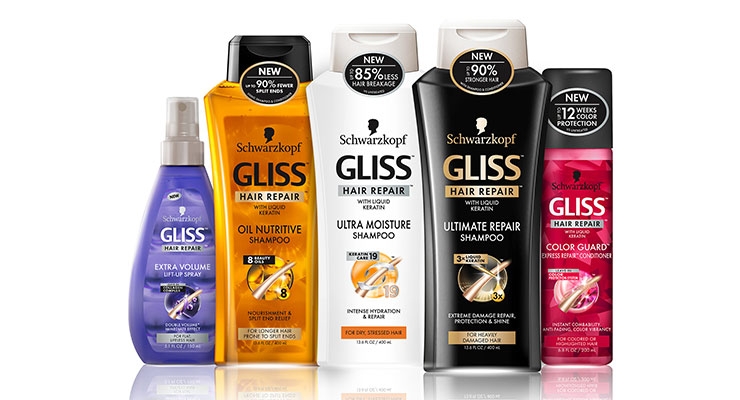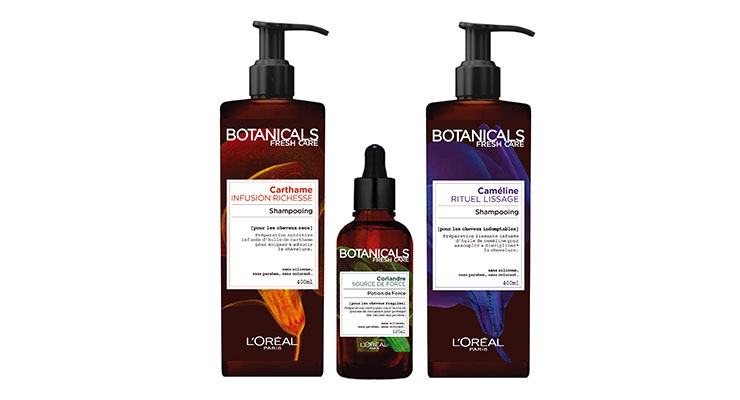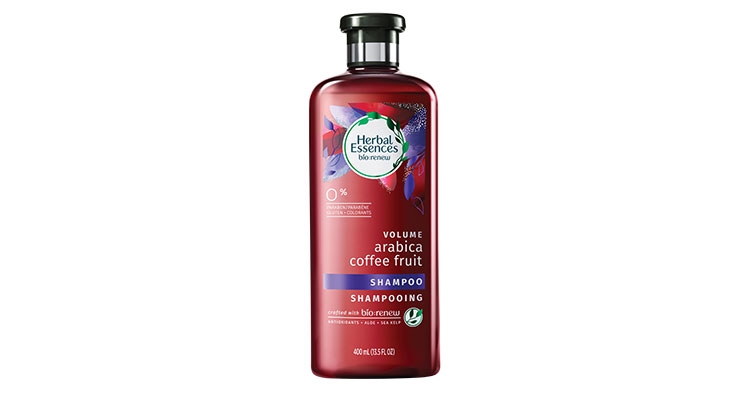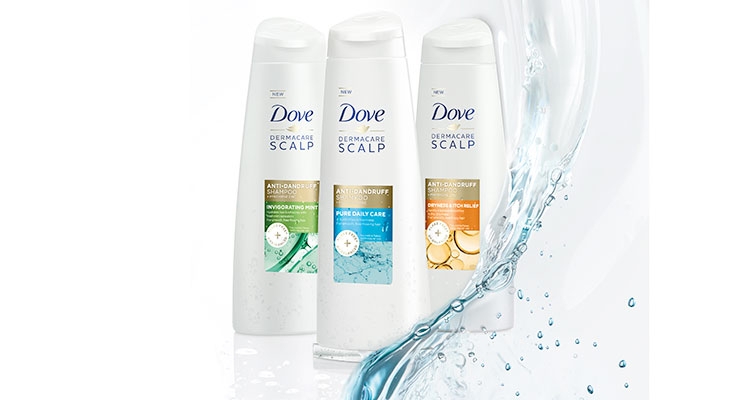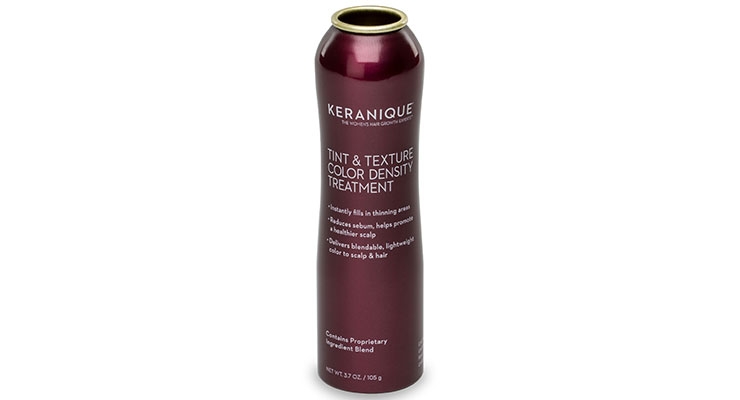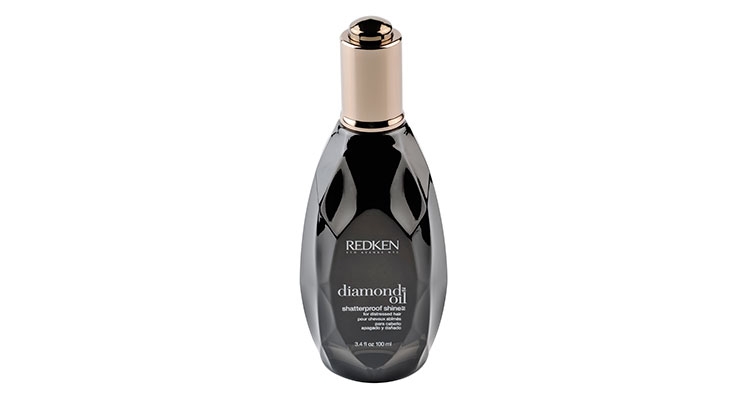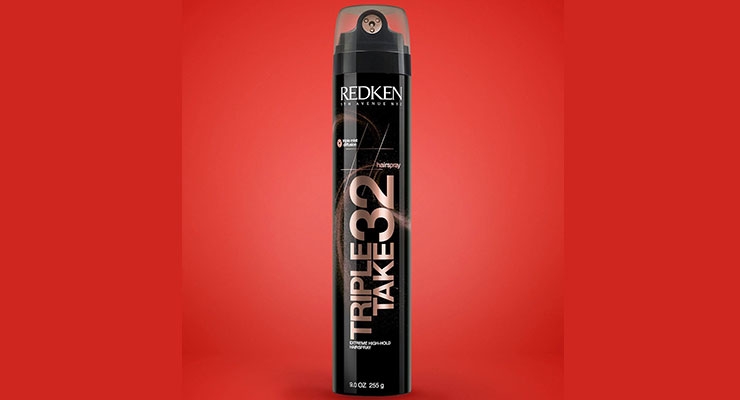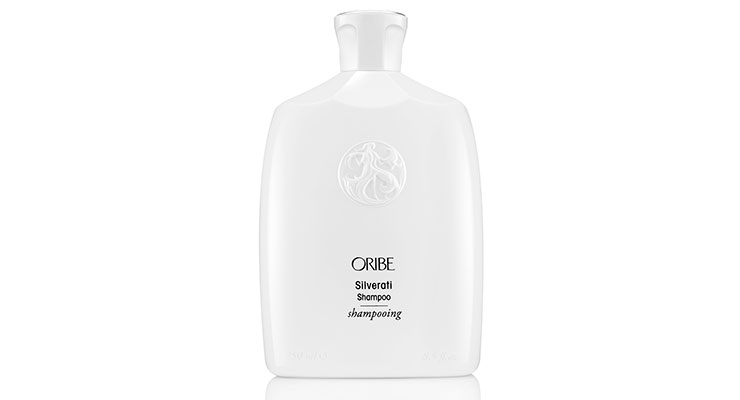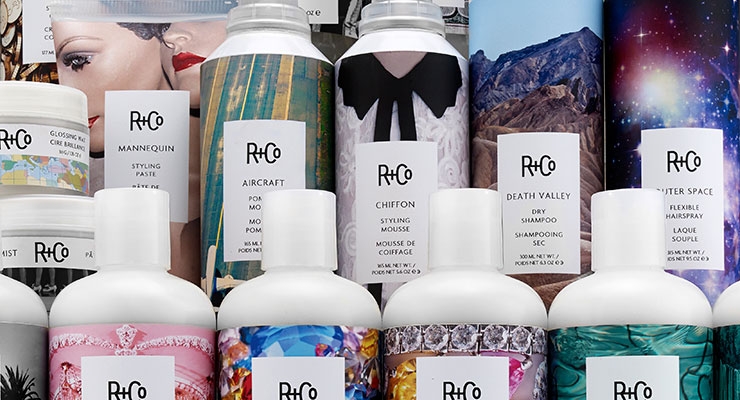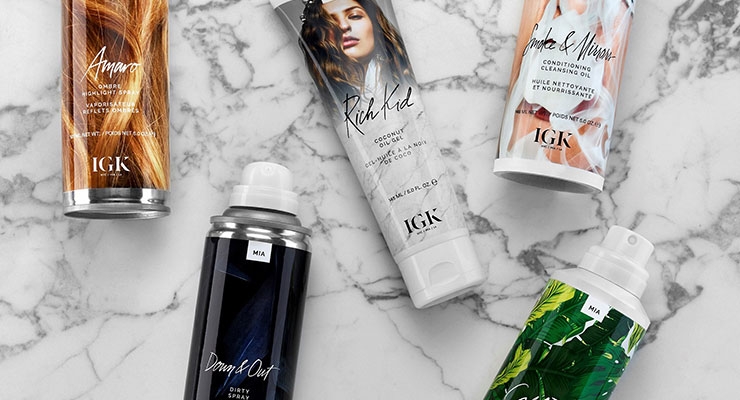Joanna Cosgrove, Contributing Editor05.01.17
A long-awaited shift in consumer preferences and discretionary spending has given the hair care products market a much-needed boost, according to a report from Future Market Insights (FMI). Shampoos, conditioners and related treatment products formulated to meet specific consumer hair needs are in demand, and this uptick is particularly palpable in the professional hair care/salon product realm, where FMI says growth is expected at a pace of 5% to 6% annually, with North America dominating the market share by 2020.
Successfully innovating in the mass market hair care vein has been more challenging. Worth an estimated $23 billion (Nielsen, 2016), annual mass market hair care product growth is around 3.3%.
Anne Machet, deputy CEO international for L’Oréal Paris, says this growth has been influenced by consumers expecting more from their products in the way of natural/organic ingredients and an improved environmental footprint. To that end, L’Oréal launched Botanicals Fresh Care, a premium hair care brand that the company says is “inspired by nature.”
Available in four varieties (coriander, safflower, geranium and camelina), Botanicals Fresh Care products represent several years’ worth of work by the Group’s raw materials sourcing teams, hair research centers, perfumers and packaging engineers. “We use only raw materials of the very highest quality,” comments Machet. “All our products are silicone, paraben and dye-free. To replace the silicones, our designers came up with a coconut and soy-based botanical complex to protect the hair without greasiness or heaviness, offering a gentle, natural and light touch.”
The brand adheres to a demanding and fully transparent set of specifications spanning ingredient sourcing and extraction of raw materials. “We are mindful about not damaging our sources and are committed to supporting an environmentally friendly, sustainable production,” Machet explains, noting that the company extends its selective requirements to product packaging as well. “All our containers are made of Polyethylene Terephthalate (PET), which is 100% recycled and recyclable.”
Botanicals Fresh Care isn’t the only noteworthy new rollout at retail. Herbal Essences recently debuted an entirely re-tooled line with spanking new formulas and packaging. Nine new “indulgently fragranced” shampoos and conditioners, plus nine new styling and treatment products, hinge on a “revolutionary” technology called bio:renew. The core building block of bio:renew is the antioxidant Histidine, which the company says “purifies and protects hair from the inside out by trapping, neutralizing and removing the build-up of free radicals that wreak havoc on hair – caused by everyday factors such as pollution, coloring, sun exposure and even water.” After 21 days of continued use, the company promises “completely transformed” tresses.
In other retail hair care news, Dove expanded its hair care line in January to include six new DermaCare Scalp shampoos and conditioners. The products are formulated with Active Pyrithione Zinc and a blend of oils to help treat dandruff and nourish, moisturize and protect the scalp and hair.
Buoyed by success in Europe, Schwarzkopf brought its Gliss Hair Repair Collection to U.S. consumers in March. Anchored by shampoos and conditioners housed in tall, angular bottles, each of the line’s 15 color-coded products features liquid keratin that promises to impart essential benefits like color protection, intense hydration, long-lasting volume, and weightless nourishment.
Research conducted by Schwarzkopf’s Germany laboratory harnessed Nobel Prize winning technology to help create the line. Using virgin hair as a control, researchers damaged the hair and found that just one use of the Gliss Ultimate Repair Shampoo and Conditioner yielded immediate improvement in the look and feel of the damaged hair. “We then found significant restoration results in the hair after successive washes,” comments Martina Spinatsch, vice president of R&D. “After 20 washes, hair was nearly restored back to its virgin state.
Focus on Packaging
The retail hair care segment is highly competitive and brands often rely on packaging differentiation to forge a connection with consumers. Mary Frash, marketing manager, Ball Food & Aerosol Packaging, Broomfield, CO, says there are a handful of standout packaging trends dominating the current retail hair care market.
For starters, less is definitely more. “On a crowded retail shelf, quiet is the new loud,” she says. “Sometimes it is easier for the consumer to find what they want when they are not distracted and inundated with messaging. Simple, clean, digestible designs that are well executed convey a premium product.”
This trend is exemplified in the 3.7 oz. Shaped Aluminum Aerosol Can that Ball manufactured for Keranique’s Tint & Texture Color Density Treatment product.
But understated doesn’t automatically mean boring. Hair care brands are experimenting more with the interplay of matte and gloss printing techniques, and are increasingly interested in incorporating sensory elements into their packaging. “Visual appeal is of course necessary, but beyond visual, many experts have stated that touch is the most stimulating of the human senses, and consumer neuroscience shows that activity in the orbitofrontal cortex is also related to our willingness to buy, and perhaps more importantly, our willingness to pay a higher price,” Frash says.
“Tactile, or raised ink, offers textured grip for unique consumer interaction with the package. The tactile pattern can be applied on 360 degrees of the can, and can be designed and applied in a particular pattern, resembling snakeskin, honeycomb, or the skin of an orange.”
Package size also matters, especially for on-the-go consumers. “When traveling, we need products that we can tuck in a desk drawer, a purse, or even in a carry-on bag,” Frash adds. “Smaller sized options also give the consumer a chance to try a new product while still encouraging brand loyalty.”
The use of treatment oils for added heat styling protection, imparting shine or decreasing frizz has led to the increased use of dropper packaging as a dosing and precision application method.
“Droppers are being introduced in many hair care products since many hair treatments require a localized and controlled application, as well as an accurate precise dosage,” comments Rosa Porras, marketing and communications manager, Virospack, Badalona, Spain. “Brands have embraced the use of droppers and therefore offer low viscosity formulas, ideal to be dispensed drop by drop.”
Virospack has responded to the needs of hair care brands with a line of standard droppers that offer dosing/application options ranging from 0.8- to 1.7ml. The company’s available designs and finishes extend to pipette customization too, affording brands the flexibility to create a look that suits their target style.
L’Oréal recently enlisted Virospack to provide the dropper assembly for its Redken Diamond Oil. The company selected a standard Virospack push button dropper decorated with a premium gold shell button to elegantly complement the product’s faceted black bottle.
L’Oréal also turned to Columbus, IN-based Lindal North America Inc., when it sought a custom actuator for its Redken Triple Take 32 Hair Spray. “The actuator incorporates an innovative spray insert with three separate orifices that provide a wide, diffused mist of product for maximum coverage and hold,” explains Alex Piagnarelli, Lindal’s North American sales director.
Beyond hairsprays, Piagnarelli says that actuator componentry has rapidly adapted to keep pace with expanding demands for dry shampoo products. “As marketers develop more formulations with high powder content…the challenge to provide non-clogging valves has increased,” he says. “Also, there is a growing trend toward custom actuators that provide both comfort, convenience and performance for both salon and retail hair care customers. Actuator features such as soft touch finger pads, locking mechanisms good for travel, and clog-proof inserts have proven to be some of the more popular features for the mobile and active consumer base.”
Signature Salon Looks
High-caliber salon product formulas nearly always take precedence over packaging, but that’s not to say brands aren’t using packaging to their advantage.
Oribe Hair Care has cultivated a distinctive shelf presence with its angularly-lined, boldly-hued, custom packaging since its inception in 2008. According to the company’s Jennifer Smith, vice president, packaging, the brand’s award-winning packaging blends Old World intricacy with sleekly modern engineered elegance, and all of the bottles, upright tubes and sophisticated jars deliver a cohesive display suggestive of perfume bottle silhouettes. “Rather than use stock bottles, the team sought out designers, engineers and manufacturers around the world to bring esteemed creative director Alex Wiederin’s richly jewel-toned vision to life, a painstaking feat that required months of testing and refinement,” she says. Each of the packages incorporates Oribe’s signature goddess cameo emblems. “In most cases, the goddess cameo is molded as part of the component. For the tubes, the goddess cameo is a separated injection molded piece that is assembled to the cap.”
The latest addition to the Oribe product lineup is Silverati, an “illuminating” shampoo and conditioner pairing specially formulated to eliminate dullness in grey and white hair. The products are housed in white Oribe signature packaging.
Oribe’s secondary cartons are as exactingly crafted as its primary packaging. Derived from certified, well-managed forests, Smith says the eco-friendly textured paper is printed with vegetable-based ink and features a 3D cameo evocative of fine letterpress stationery.
In contrast to Oribe, salon brands R+Co and IGK make smart use of stock packaging and let their bold, high-impact product labels do the communicating.
Each R+Co product features a unique label that cleverly winks at the type of product contained within the package. “It was important to me that each product had its own distinct personality and character that is based around what the product actually does,” comments Amanda Wall, R+Co’s creative director and packaging designer.
Wall says she begins the design process by naming the product in a way that references its function, then she sets out to match the name with a strong visual label reference. “For example, our dry shampoo is called Death Valley, a desert in California and one of the driest places in the word,” she says. “The image follows as a visual reference, so you instantly have an idea of what the product is meant to do.”
To ensure a strong, graphic label, R+Co shoots much of its own imagery. “We actually went to Death Valley to take the photo on the bottle, the hands on the Vicious can are my hands,” she says. “People are drawn to the packaging because they can relate to it in some way, maybe it’s a place they’ve been or a thing they’ve touched; it creates an emotional response.”
Pairing clean, white stock packaging with bold labels not only unifies the brand in salon displays, it enables the company to put more resources into their high-performance products, helping preserve the brand’s key price point. The brand spans 41 products (54 SKUs).
Salon brand IGK also uses a striking label and stock packaging combination.
Launched in September 2016, the 26-product IGK brand is named for its co-founders Aaron Grenia, Leo Izquierdo, Franck Izquierdo and Chase Kusero. For Melissa Cobos, the brand’s creative director, the process of marrying a product with the perfect package begins with decoding a function, purpose and ultimately the customer. She draws inspiration from eclectic women, who can be feminine and modern one day, and edgy and eccentric the next day. “Since we have ‘not so common’ names, I link both the name and design to create the story,” she says. “My goal is to make you relate to the product easily and think, ‘that’s for me!’”
Creating a grooming line distinctly for men is equal parts formulating and designing a masculine packaging aesthetic. Clayton Douds, founder of O’Douds Apothecary, says the spark that gave rise to his own men’s product line came after an unsuccessful search for a “natural” men’s pomade.
O’Douds formally launched on Etsy in 2014 with a single product that was produced in a small apartment kitchen. “Our goal has always been to make simple, effective products from ingredients that are good for your health and good for the earth,” he says. “As our line has expanded over the years we’ve continued to make products that not only perform exceptionally, but are made from the finest ingredients we can find.”
The company’s distinctive branding (created by Christian Watson of the firm, 1924us) embodies a classic apothecary vibe. “We love what old apothecaries represented, their products were much more centered around health than cosmetics, and we want to bring back that way of thinking,” Douds says. “Our brand is very focused on transparency and authenticity, and to represent that visually we decided to go with hand-drawn type and illustrations. We love the minimal, clean lines that are very popular these days, but I think it’s just as important to add personality to your brand.”
After partnering with Southfield, MI-based Reforma Group, the company’s 17-product line has grown organically, with new products added about every six months. “Before working with Reforma, we were doing all of our own production, so we were definitely nervous about the transition,” Douds says. “As we’ve continued to grow, Reforma has been able to accommodate all of our new needs.
They’ve helped us source key ingredients, containers, labels and deco boxes. We’re still a small company with a lot to learn, but the team at Reforma is always there to answer our questions and guide us through the industry.”
Vesna Deljosevic, president and CEO of Reforma Group, says the men’s hair care category is an exciting and evolving space right now. “Men especially want simple, green, effective shampoos, conditioners and styling products for their hair, and they also want specialty beard care products like balms, waxes and oils,” she says. “Clayton came to us with a clear idea of his branding and what he wanted to achieve with his products. We’ve been thrilled to help him realize that vision.”
Successfully innovating in the mass market hair care vein has been more challenging. Worth an estimated $23 billion (Nielsen, 2016), annual mass market hair care product growth is around 3.3%.
Anne Machet, deputy CEO international for L’Oréal Paris, says this growth has been influenced by consumers expecting more from their products in the way of natural/organic ingredients and an improved environmental footprint. To that end, L’Oréal launched Botanicals Fresh Care, a premium hair care brand that the company says is “inspired by nature.”
Available in four varieties (coriander, safflower, geranium and camelina), Botanicals Fresh Care products represent several years’ worth of work by the Group’s raw materials sourcing teams, hair research centers, perfumers and packaging engineers. “We use only raw materials of the very highest quality,” comments Machet. “All our products are silicone, paraben and dye-free. To replace the silicones, our designers came up with a coconut and soy-based botanical complex to protect the hair without greasiness or heaviness, offering a gentle, natural and light touch.”
The brand adheres to a demanding and fully transparent set of specifications spanning ingredient sourcing and extraction of raw materials. “We are mindful about not damaging our sources and are committed to supporting an environmentally friendly, sustainable production,” Machet explains, noting that the company extends its selective requirements to product packaging as well. “All our containers are made of Polyethylene Terephthalate (PET), which is 100% recycled and recyclable.”
Botanicals Fresh Care isn’t the only noteworthy new rollout at retail. Herbal Essences recently debuted an entirely re-tooled line with spanking new formulas and packaging. Nine new “indulgently fragranced” shampoos and conditioners, plus nine new styling and treatment products, hinge on a “revolutionary” technology called bio:renew. The core building block of bio:renew is the antioxidant Histidine, which the company says “purifies and protects hair from the inside out by trapping, neutralizing and removing the build-up of free radicals that wreak havoc on hair – caused by everyday factors such as pollution, coloring, sun exposure and even water.” After 21 days of continued use, the company promises “completely transformed” tresses.
In other retail hair care news, Dove expanded its hair care line in January to include six new DermaCare Scalp shampoos and conditioners. The products are formulated with Active Pyrithione Zinc and a blend of oils to help treat dandruff and nourish, moisturize and protect the scalp and hair.
Buoyed by success in Europe, Schwarzkopf brought its Gliss Hair Repair Collection to U.S. consumers in March. Anchored by shampoos and conditioners housed in tall, angular bottles, each of the line’s 15 color-coded products features liquid keratin that promises to impart essential benefits like color protection, intense hydration, long-lasting volume, and weightless nourishment.
Research conducted by Schwarzkopf’s Germany laboratory harnessed Nobel Prize winning technology to help create the line. Using virgin hair as a control, researchers damaged the hair and found that just one use of the Gliss Ultimate Repair Shampoo and Conditioner yielded immediate improvement in the look and feel of the damaged hair. “We then found significant restoration results in the hair after successive washes,” comments Martina Spinatsch, vice president of R&D. “After 20 washes, hair was nearly restored back to its virgin state.
Focus on Packaging
The retail hair care segment is highly competitive and brands often rely on packaging differentiation to forge a connection with consumers. Mary Frash, marketing manager, Ball Food & Aerosol Packaging, Broomfield, CO, says there are a handful of standout packaging trends dominating the current retail hair care market.
For starters, less is definitely more. “On a crowded retail shelf, quiet is the new loud,” she says. “Sometimes it is easier for the consumer to find what they want when they are not distracted and inundated with messaging. Simple, clean, digestible designs that are well executed convey a premium product.”
This trend is exemplified in the 3.7 oz. Shaped Aluminum Aerosol Can that Ball manufactured for Keranique’s Tint & Texture Color Density Treatment product.
But understated doesn’t automatically mean boring. Hair care brands are experimenting more with the interplay of matte and gloss printing techniques, and are increasingly interested in incorporating sensory elements into their packaging. “Visual appeal is of course necessary, but beyond visual, many experts have stated that touch is the most stimulating of the human senses, and consumer neuroscience shows that activity in the orbitofrontal cortex is also related to our willingness to buy, and perhaps more importantly, our willingness to pay a higher price,” Frash says.
“Tactile, or raised ink, offers textured grip for unique consumer interaction with the package. The tactile pattern can be applied on 360 degrees of the can, and can be designed and applied in a particular pattern, resembling snakeskin, honeycomb, or the skin of an orange.”
Package size also matters, especially for on-the-go consumers. “When traveling, we need products that we can tuck in a desk drawer, a purse, or even in a carry-on bag,” Frash adds. “Smaller sized options also give the consumer a chance to try a new product while still encouraging brand loyalty.”
The use of treatment oils for added heat styling protection, imparting shine or decreasing frizz has led to the increased use of dropper packaging as a dosing and precision application method.
“Droppers are being introduced in many hair care products since many hair treatments require a localized and controlled application, as well as an accurate precise dosage,” comments Rosa Porras, marketing and communications manager, Virospack, Badalona, Spain. “Brands have embraced the use of droppers and therefore offer low viscosity formulas, ideal to be dispensed drop by drop.”
Virospack has responded to the needs of hair care brands with a line of standard droppers that offer dosing/application options ranging from 0.8- to 1.7ml. The company’s available designs and finishes extend to pipette customization too, affording brands the flexibility to create a look that suits their target style.
L’Oréal recently enlisted Virospack to provide the dropper assembly for its Redken Diamond Oil. The company selected a standard Virospack push button dropper decorated with a premium gold shell button to elegantly complement the product’s faceted black bottle.
L’Oréal also turned to Columbus, IN-based Lindal North America Inc., when it sought a custom actuator for its Redken Triple Take 32 Hair Spray. “The actuator incorporates an innovative spray insert with three separate orifices that provide a wide, diffused mist of product for maximum coverage and hold,” explains Alex Piagnarelli, Lindal’s North American sales director.
Beyond hairsprays, Piagnarelli says that actuator componentry has rapidly adapted to keep pace with expanding demands for dry shampoo products. “As marketers develop more formulations with high powder content…the challenge to provide non-clogging valves has increased,” he says. “Also, there is a growing trend toward custom actuators that provide both comfort, convenience and performance for both salon and retail hair care customers. Actuator features such as soft touch finger pads, locking mechanisms good for travel, and clog-proof inserts have proven to be some of the more popular features for the mobile and active consumer base.”
Signature Salon Looks
High-caliber salon product formulas nearly always take precedence over packaging, but that’s not to say brands aren’t using packaging to their advantage.
Oribe Hair Care has cultivated a distinctive shelf presence with its angularly-lined, boldly-hued, custom packaging since its inception in 2008. According to the company’s Jennifer Smith, vice president, packaging, the brand’s award-winning packaging blends Old World intricacy with sleekly modern engineered elegance, and all of the bottles, upright tubes and sophisticated jars deliver a cohesive display suggestive of perfume bottle silhouettes. “Rather than use stock bottles, the team sought out designers, engineers and manufacturers around the world to bring esteemed creative director Alex Wiederin’s richly jewel-toned vision to life, a painstaking feat that required months of testing and refinement,” she says. Each of the packages incorporates Oribe’s signature goddess cameo emblems. “In most cases, the goddess cameo is molded as part of the component. For the tubes, the goddess cameo is a separated injection molded piece that is assembled to the cap.”
The latest addition to the Oribe product lineup is Silverati, an “illuminating” shampoo and conditioner pairing specially formulated to eliminate dullness in grey and white hair. The products are housed in white Oribe signature packaging.
Oribe’s secondary cartons are as exactingly crafted as its primary packaging. Derived from certified, well-managed forests, Smith says the eco-friendly textured paper is printed with vegetable-based ink and features a 3D cameo evocative of fine letterpress stationery.
In contrast to Oribe, salon brands R+Co and IGK make smart use of stock packaging and let their bold, high-impact product labels do the communicating.
Each R+Co product features a unique label that cleverly winks at the type of product contained within the package. “It was important to me that each product had its own distinct personality and character that is based around what the product actually does,” comments Amanda Wall, R+Co’s creative director and packaging designer.
Wall says she begins the design process by naming the product in a way that references its function, then she sets out to match the name with a strong visual label reference. “For example, our dry shampoo is called Death Valley, a desert in California and one of the driest places in the word,” she says. “The image follows as a visual reference, so you instantly have an idea of what the product is meant to do.”
To ensure a strong, graphic label, R+Co shoots much of its own imagery. “We actually went to Death Valley to take the photo on the bottle, the hands on the Vicious can are my hands,” she says. “People are drawn to the packaging because they can relate to it in some way, maybe it’s a place they’ve been or a thing they’ve touched; it creates an emotional response.”
Pairing clean, white stock packaging with bold labels not only unifies the brand in salon displays, it enables the company to put more resources into their high-performance products, helping preserve the brand’s key price point. The brand spans 41 products (54 SKUs).
Salon brand IGK also uses a striking label and stock packaging combination.
Launched in September 2016, the 26-product IGK brand is named for its co-founders Aaron Grenia, Leo Izquierdo, Franck Izquierdo and Chase Kusero. For Melissa Cobos, the brand’s creative director, the process of marrying a product with the perfect package begins with decoding a function, purpose and ultimately the customer. She draws inspiration from eclectic women, who can be feminine and modern one day, and edgy and eccentric the next day. “Since we have ‘not so common’ names, I link both the name and design to create the story,” she says. “My goal is to make you relate to the product easily and think, ‘that’s for me!’”
Creating a grooming line distinctly for men is equal parts formulating and designing a masculine packaging aesthetic. Clayton Douds, founder of O’Douds Apothecary, says the spark that gave rise to his own men’s product line came after an unsuccessful search for a “natural” men’s pomade.
O’Douds formally launched on Etsy in 2014 with a single product that was produced in a small apartment kitchen. “Our goal has always been to make simple, effective products from ingredients that are good for your health and good for the earth,” he says. “As our line has expanded over the years we’ve continued to make products that not only perform exceptionally, but are made from the finest ingredients we can find.”
The company’s distinctive branding (created by Christian Watson of the firm, 1924us) embodies a classic apothecary vibe. “We love what old apothecaries represented, their products were much more centered around health than cosmetics, and we want to bring back that way of thinking,” Douds says. “Our brand is very focused on transparency and authenticity, and to represent that visually we decided to go with hand-drawn type and illustrations. We love the minimal, clean lines that are very popular these days, but I think it’s just as important to add personality to your brand.”
After partnering with Southfield, MI-based Reforma Group, the company’s 17-product line has grown organically, with new products added about every six months. “Before working with Reforma, we were doing all of our own production, so we were definitely nervous about the transition,” Douds says. “As we’ve continued to grow, Reforma has been able to accommodate all of our new needs.
They’ve helped us source key ingredients, containers, labels and deco boxes. We’re still a small company with a lot to learn, but the team at Reforma is always there to answer our questions and guide us through the industry.”
Vesna Deljosevic, president and CEO of Reforma Group, says the men’s hair care category is an exciting and evolving space right now. “Men especially want simple, green, effective shampoos, conditioners and styling products for their hair, and they also want specialty beard care products like balms, waxes and oils,” she says. “Clayton came to us with a clear idea of his branding and what he wanted to achieve with his products. We’ve been thrilled to help him realize that vision.”

